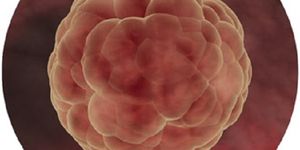Extracellular vesicles (membrane sacs secreted from cells) have sprung forth as valuable mediators facilitating cells' communications with their environment to regulate a wide range of processes that support life.
Specific roles for these vesicles are now recognized in terms of cancer, infectious diseases, and neurodegenerative disorders.

The laboratory of Crislyn D'Souza-Schorey, PhD, professor and chair, Department of Biological Sciences, University of Notre Dame, Notre Dame, Ind, is studying a unique group of vesicles shed from tumor cells.
"We refer to these vesicles as tumor-derived microvesicles," she says. "Our work over the past few years has focused on their role in enhancing tumor cell invasion. Emerging evidence suggests that extracellular vesicles can propagate cancers in several ways-for example, by breaking down the extracellular matrix to allow tumor cells to invade their surroundings, by enhancing angiogenesis, and by possibly modulating the patient's immune system, all of which promote metastases."
The amount of tumor-derived microvesicles in circulation in cancers increases with disease stage, and they could be plentiful sources of clinical biomarkers, she says. To date, we have only a basic grasp of how this specialized subgroup of membrane vesicles is released from tumor cells.
"We know that it is not random release from cells, but that tumor cell components are targeted to these vesicles before they are pinched and realized from cells," D'Souza-Schorey says.
Her research team shed light on how specific proteins can be directed to tumor microvesicles in a recent study. They demonstrate that the protein called VAMP3 steers vital constituents of the cell toward shedding microvesicles to help ease extracellular matrix breakdown and tumor invasion.
"Getting at this type of information is important because it provides options for how one might be able to modulate the composition of these shed vesicles or prevent release," says James Clancy, the study's lead author.
The researchers also found microvesicles in the blood and fluid build-up in the area between the lining of the abdomen and abdominal organs in women who have ovarian cancer.
"We think that these microvesicles are shed into circulation universally by tumors, and began testing this hypothesis by assessing the body fluids of patients with ovarian cancer," D'Souza-Schorey says.
D'Souza-Schorey's team collaborated with Michael Method, MD, MPH, a specialist in gynecologic oncology, and his team at Michiana Hematology Oncology, which operates cancer treatment centers in northern Indiana.
"We sought to investigate whether this population of microvesicles could also be detected in the body fluids on cancer patients," D'Souza-Schorey says. "Dr. Method not only provided oversight of the clinical samples we obtained, but he also walked us through the pathophysiology of the cases we were investigating."
The findings demonstrate that CA-125, a commonly used serum biomarker for ovarian cancer, is measurably enriched in microvesicles taken from ovarian patients. The discoveries suggest that the development of microvesicle-based biomarkers could possibly enrich key tumor markers and enhance the sensitivity of detection. Interest is mounting in harnessing circulating microvesicles as disease biomarkers.
The study, titled "Regulated delivery of molecular cargo to invasive tumour-derived microvesicles," is in the April 21 issue of Nature Communications.
[Source: University of Notre Dame]









